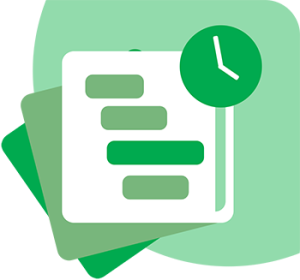Building up a pension as a self-employed person

Building a pension as a self-employed person, dull! It may sound like that, but you want to get this right for yourself. When it comes to women being financially independent, we all have a battle ahead of us. And when we talk about our future, we will really have to talk about our retirement. If you are self-employed, then you will have to build up your own pension.
ZZP-er or not: in this article we share 7 steps on how to start building your own pension!
Pension for the self-employed
The Netherlands has more than 1.25 million self-employed people. A record. Because never before have so many Dutch people taken matters into their own hands. The self-employed person handles everything herself: her own assignments, her own disability insurance and her own pension. There is no employer to fall back on. And the latter – building up a pension as a self-employed person – goes wrong quite often. In fact, some 250,000 self-employed people do not build up a pension. And that group is therefore at risk of falling sharply in income later. We don’t want that!
How do we roll in the Netherlands?
In the Netherlands, there are three ways to build up a pension. First, every Dutch citizen is entitled to AOW, a pension provided by the government. In addition, a large proportion of the Dutch build up pension through an employer pension plan. The third way is a voluntary, individual retirement plan. This allows employees without an (adequate) pension plan or self-employed workers to build up (additional) pensions themselves.
Pension for the self-employed
Those who do not arrange a pension through an employer or a supplemental retirement account rely on the state pension. Currently, the amount of that AOW is €1187.43 for singles and €812.71 for cohabitants or married people. By comparison, this amounts to 70% and 50% of the minimum wage, respectively. View the exact amount of AOW depending on your situation here.
That’s not a whole lot. Indeed, the idea of having to make ends meet on €1187 … gulp! Especially not when you consider that the average self-employed person earns €38,000 on an annual basis. On a monthly basis, that is almost three times as much as the state pension for singles. Thus, those who do not accrue a pension as self-employed workers may find themselves in dire straits after retirement age. Current retiring self-employed workers also agree. According to Nibud, more than 40 percent of them find it difficult to make ends meet after retirement.
Gray heads
Big chance, by the way, that AOW will be reduced in the future. In fact, we currently know about 3.2 million people over 65 in the Netherlands, but that number will be 50% higher in 20 years: the Netherlands will have 4.8 million people over 65 by then. A lot more pensionados, in other words. The Netherlands is not only becoming more entrepreneurial, but also grayer.
This aging may just have serious consequences for our retirement. Currently, we are all paying taxes nicely for our state pension. But when there will soon be more and more elderly people – and thus relatively fewer working people – there will be less tax coming in. That could mean two things: either pay more taxes or receive less pension. Of course, neither of us wants it!
Building your own retirement is easy peasy
The text above may suggest that some sort of doomsday scenario is unfolding around retiring self-employed workers. Fortunately, that is certainly not the case. At least, not as long as you take good care of yourself as a self-employed person. Fortunately, it can be done quite easily, and what’s more, the government is helping you with some attractive rules.
Build additional pension
Building a pension as a self-employed person is something you have to do yourself. This can be done with a dedicated retirement account. The Dutch government likes to see ZZP’ers contribute to such a retirement account, which is why part of the deposit is tax-free. For example, if you deposit an amount into the retirement account in 2023, you can claim a portion of it back during your tax return in 2024. So that’s how the IRS helps pay for your pension. Because of that tax advantage, not everyone is allowed to just deposit into such a retirement account and there is a maximum annual deposit: the annual margin. You can easily calculate the annual margin. Read more about annual allowance here.
Build retirement through a free savings or investment account
Want a little more freedom in building retirement? Then you can choose to invest or save in a free account. There are no tax benefits associated with this, but such a free account gives a lot of freedom. This is because you can always withdraw the accrued amount in the interim. This is also a pitfall at the same time: by withdrawing the money in the interim, you are actually taking a piece out of your pension. Don’t want to, so really see this pot as a long-term investment to profit well from later.





